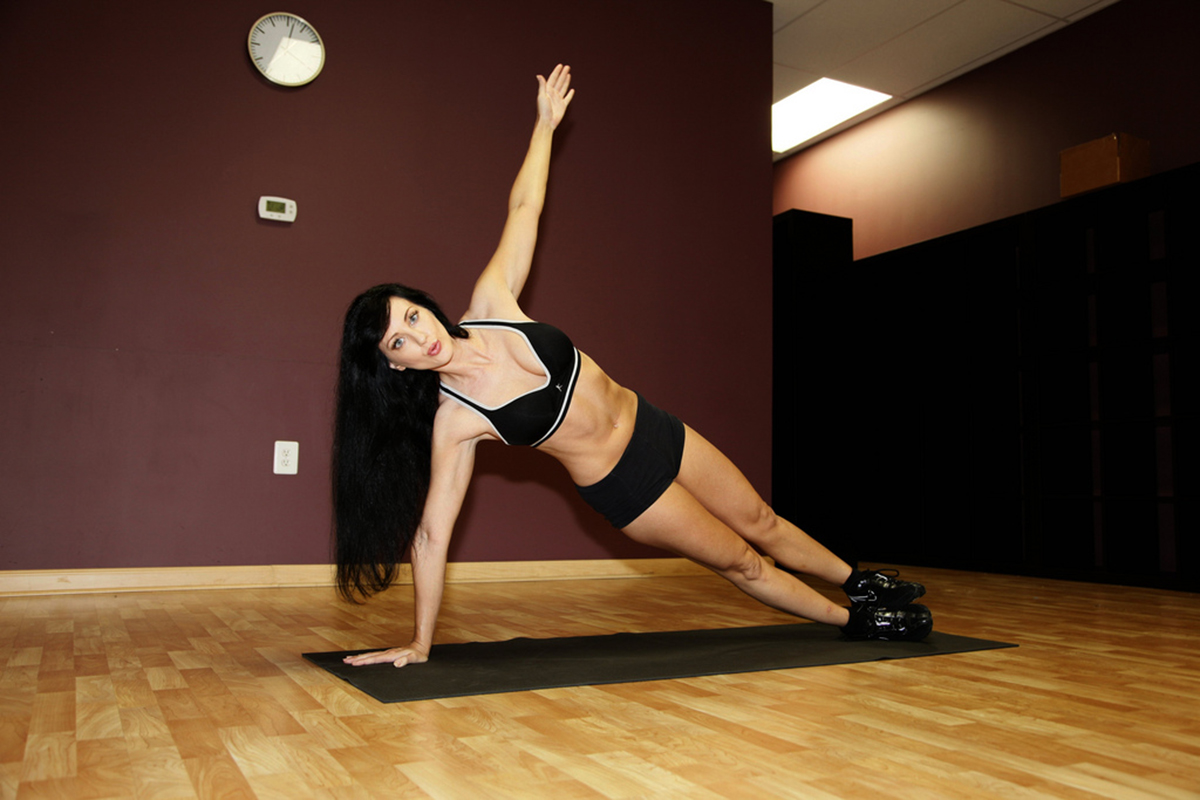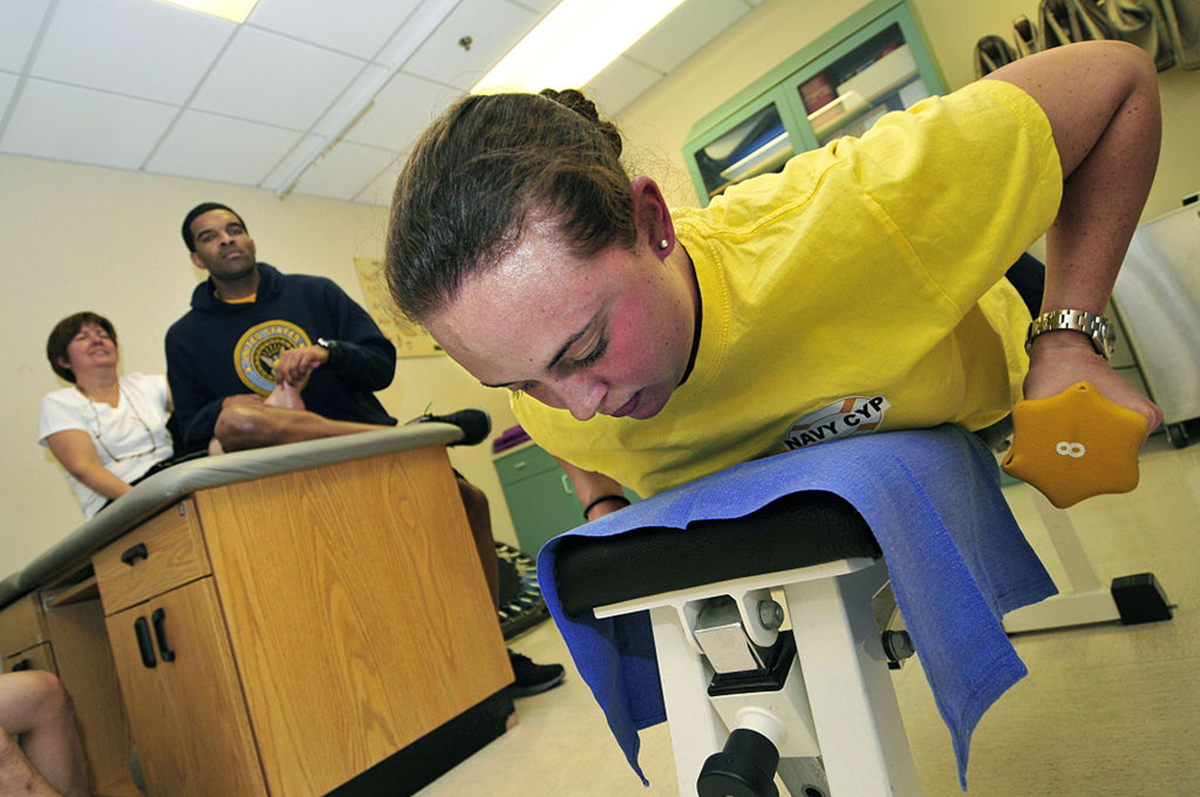Most of us have at least heard of our ‘traps.’ That’s the muscle you work with shrugs until your neck disappears, right? Well, kind of… but that’s also kind of the problem.

The trapezius superior is what most gym rats mean when they talk about their traps. But what you really want is balance between the upper and lower traps, and most of us don’t have it. We need to take a look at the problem, and to do that we need to look at the trapezius inferior.
The trapezius inferior is harder to see than the trap superior because it’s medial – closer to the spine – to the lats, and because it’s often so underdeveloped. It can be hidden under a layer of subcutaneous fat too. But we can find it if we can find our backbones and our shoulderblades. The trapezius muscle attaches the shoulderblade by the spine of the shoulderblade – the bony part that stands out in the middle of your shoulderblade – with the spine all the way down to the 12th thoracic vertebra.
As a result, imbalanced traps can pull your shoulderblades out of place, or pull your spine out of shape, or both.
Training the way a lot of people do, with an emphasis on the upper traps, pulls the shoulderblades higher and internally rotates the arms, making the elbows stick out. Meanwhile the neck is lordotic and the head is tilted back and pushed forward. Ths traps don’t actually pull your shoulderblades up your back – they just rotate them around your actual shoulder joint, the acronioclavicular joint to be precise.
So much for guys who train wrong. What does this have to do with the general population – those of us who don’t call each other brah and do curls in the squat rack at Planet Fitness?
What can we do about it? Well, you could get a better desk chair, but there are moves you can use to put your trapezius back in working order across your whole back too.
I’ve deliberately chosen to start with the focus on simple bodyweight exercises that almost anyone can do: if they’re so easy for you that they don’t do anything, try using equivalent barbell or dumbbell moves, or cables or bands with more resistance. Later on, there are some more challenging moves, but remember the goal is to improve your movement quality and fix bad motor patterns, not to move a ton of weight!
Read More: Understanding So-Called Stabilizer Muscles
Also, bear in mind that it’s almost impossible to target one of the back muscles at the total exclusion of all the others; you just can’t train your trapezius and not your other scapular retractors, for instance. So some of these will hit many different muscles: that’s a good thing in my eyes, since it’s usually better to attack a bad movement by fixing the movement rather than focussing too much on the muscles involved.
The Exercises
Start with a drill to relax the neck and upper back. Try lying on the floor and bridging, then relaxing your neck and pulling your shoulders up, back, and down. You should find this helps to relax the whole shoulder and neck area, so that you can train more safely.

Exercise 1: Pull-Aparts
Band pull-aparts are a move for your scapular retractors. Hold an exercise band in both hands and extend your hands out in front of you, then pull them slowly apart. At the end of the movement, pull your scapulae together tight and then slowly return to the start.
Exercise 2: Elbow Lifts
Lie face-down with your hands clasped behind your head, your elbows on the floor. Pull your elbows up off the floor slowly and hold them there for a count of three to five seconds. Repeat the movement about ten to fifteen times. These make our retractors work harder than you’d expect, so take it slow –don’t dismiss them because they sound too easy!
Exercise 3: Wall Angels
We’ve all seen snow angels – wall angels are the same sort of movement. Instead of making a pretty pattern in the snow, though, you’ll be making yourself horrified at how un-mobile and un-stable you are. Wall angels are a real eye opener as well as a highly effective move for the whole array of scapular muscles.
Stand with your heels touching a wall. Now, press your shoulderblades, elbows and the back of your head against the wall too, with your hands up. Touch your hands against the wall, then try to put as much of your spine as you can against the wall too. Push your hands up overhead till your arms are fully extended, then retract them til they’re as low as you can go, all while never taking your hands, elbows or spine off the wall.
Exercise 4: Klokov Press
Klokov Presses are named for the Russian weightlifter who popularized them, Dmitry Klokov. Begin with a light weight – an empty bar is a good choice of starting load, but so is a broomstick – and place the bar on your upper trapezius muscles. Now slowly press the bar overhead until you’re in the top position of a snatch, with your arms wide and the bar above the top and back of your head, in line with your spine. Concentrate on ‘pulling the bar apart’ – act like you’re trying to rip the bar in two in the middle by pulling its ends apart. When you can move up to using some weight with this movement you can expect great benefits in shoulder flexibility and stability as your lower traps come online in a big way to stabilize the shoulder blade.
Read More: Human muscle groups and exercises
Exercise 5: Protraction/Retraction Supersets
Scapular protraction simply means pushing up with just the scapular muscles. Use a dumbbell for scapular rows, where you’ll do as much of the rowing movement as you can with a straight arm, and then immediately switch to doing scapular bench presses, where you’ll do as much of the bench press movement as you can using only your scapular muscles.
If you have favourites I haven’t mentioned or you’re getting stuck anywhere, get hold of me in the comments section below
- Photo courtesy of Keith Allison by Flickr : www.flickr.com/photos/keithallison/3805564878
- Photo courtesy of U.S. Navy photo by Mass Communication Specialist 2nd Class Felicito Rustique by Wikimedia Commons : en.wikipedia.org/wiki/File:US_Navy_111102-N-IZ292-050_Operations_Specialist_1st_Class_Jennifer_Funderburk,_right,_lifts_weights_du

